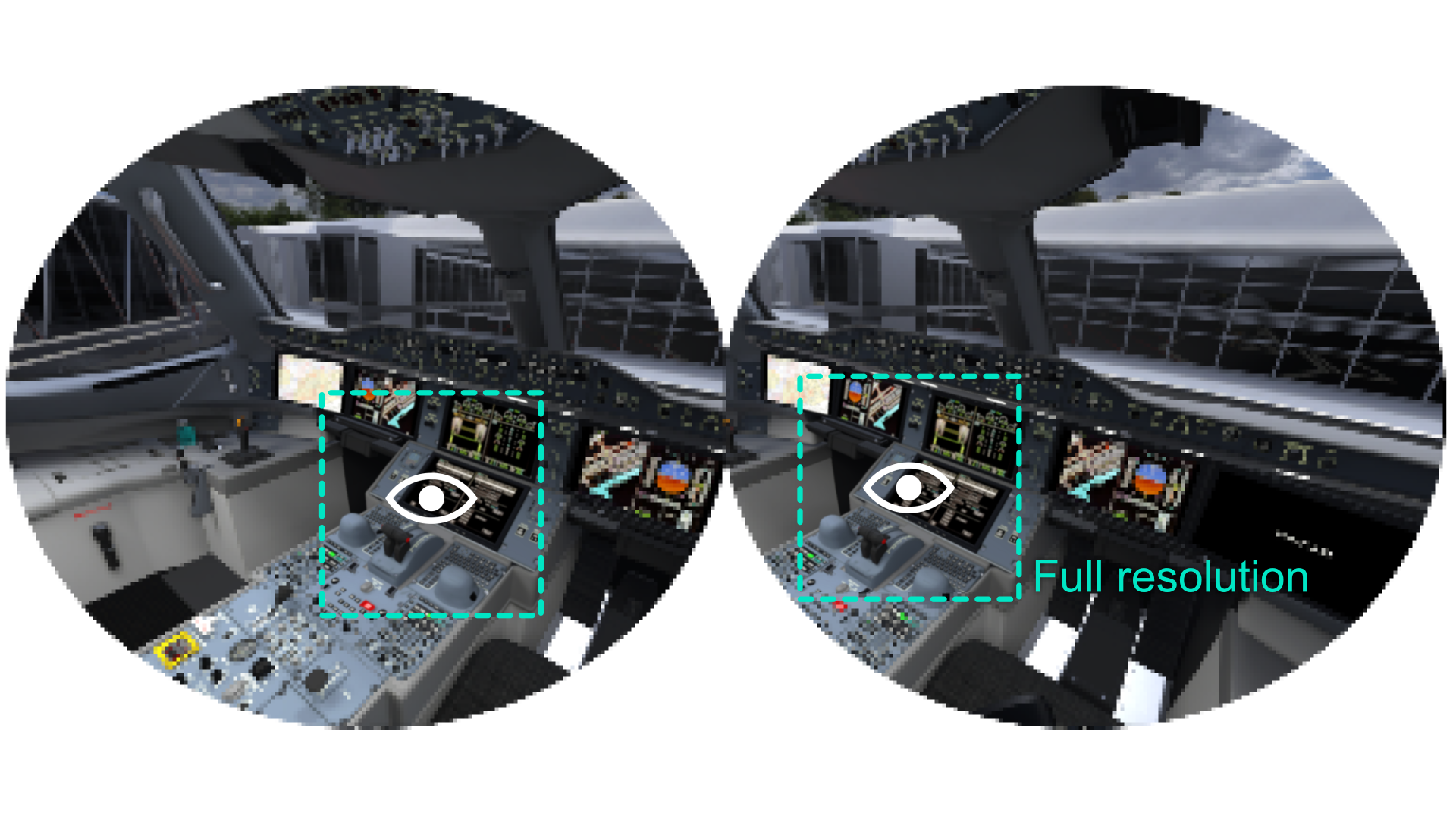Human eye resolution
Foveated Rendering
Rendering for the Varjo headsets is very similar to rendering for other HMDs. The main difference is that applications must submit four views instead of two. There are two displays for viewports per eye: a human-eye-resolution focus view and a high-resolution peripheral view.
Foveated rendering uses eye tracking to render the image in full resolution only in those areas where the user is currently looking. This allows for significantly improved performance and frame rate with minimal to no perceived loss in quality. This method mimics the way our eyes work in real life, taking in the greatest detail around the center of our gaze. Foveated rendering is available for all Varjo headsets.

When using Varjo XR plugins for Unity or Unreal, these features are enabled by default.
To learn more about how the image is rendered to the Varjo HMD, see Rendering to Varjo headsets.
Bionic Display™ for XR-3 and VR-3
For Varjo XR-3 and VR-3 headsets there are two displays for each eye: a human-eye-resolution focus display and a high-resolution peripheral display. The focus display is shown in front of the peripheral display and is blended seamlessly with it.

When looking through the headset, the focus display is fixed in the center of your vision, with the extra width on the sides wrapping around the periphery. Foveated rendering will work across this blended view on top of both displays.
Varjo XR-4 has no need to two displays per eye as the displays are high enough resolution across the full view. Aero also only has a single display per eye, no focus displays.